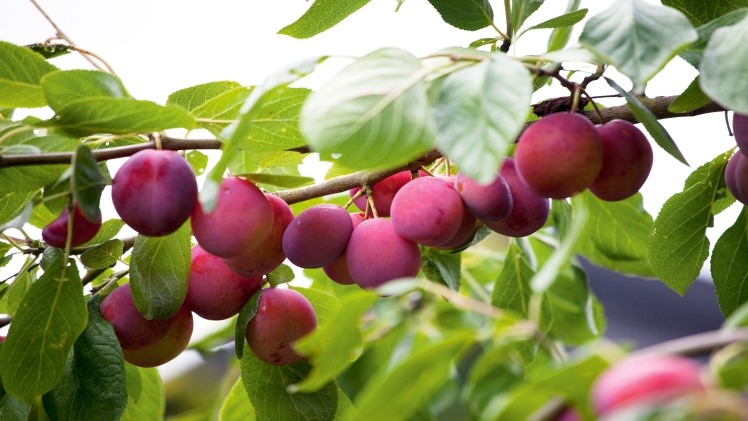In the world of fruit tree cultivation, the art of pruning is a vital skill that can transform a tree into a compact, bountiful, and visually stunning masterpiece. Among the many fruit trees that benefit from expert pruning, the Pixy Plum stands out as a prime example. According to CRJ Fruit-Trees experts, before you buy plum trees you should be aware that with its smaller size and prolific fruit production, the Pixy Plum tree is an ideal candidate for those looking to maximize their fruit harvest in limited space. In this comprehensive guide, we’ll explore the importance of pruning and dive into the techniques that will help you cultivate a Pixy Plum tree that’s not only compact but also abundant in delicious plums.
The Art of Pruning: Insights from Experts
1. Vital for Health and Productivity
Pruning is an essential practice for fruit trees that goes beyond aesthetics. It plays a pivotal role in maintaining the health and productivity of the tree. Regular pruning helps remove dead or diseased branches, improving air circulation and reducing the risk of fungal diseases. It also encourages the growth of new, fruit-bearing branches and spurs, ensuring a continuous harvest year after year.
2. Space Optimization
For gardeners with limited space, pruning is a valuable tool for optimizing the use of available room. By training a fruit tree to grow in a specific shape or size, you can fit more trees in a small area without sacrificing fruit quality or quantity. This is especially beneficial in urban gardens or smaller orchards where space is at a premium.
Understanding the Pixy Plum Tree
Before we delve into the pruning techniques for Pixy Plum trees, it’s essential to understand the characteristics of this delightful fruit tree:
- Compact Size: The Pixy Plum tree is naturally compact, making it an excellent choice for smaller gardens, patios, or even container gardening.
- Prolific Fruit Production: Despite its size, the Pixy Plum tree bears a remarkable quantity of plums. Its branches are laden with sweet, juicy fruit that ripens in late summer.
- Self-Fertile: Pixy Plum trees are self-fertile, meaning you can grow them as standalone trees without the need for a pollination partner. However, having multiple plum trees can enhance cross-pollination and potentially increase fruit yield.
- Ideal for Pruning: The Pixy Plum tree’s compact nature makes it an ideal candidate for various pruning techniques to control size and shape while maximizing fruit production.
Pruning Techniques for a Pixy Plum Tree
Now that you’re acquainted with the Pixy Plum tree, let’s explore the pruning techniques that will help you cultivate a compact yet prolific plum tree:
- Winter Pruning: It is recommended to perform pruning on Pixy Plum trees during the dormant winter period, which generally spans from late November to early March. By employing this approach, the level of stress exerted on the tree is minimized, thereby decreasing the likelihood of disease transmission.
- Remove Dead or Diseased Branches: Commence the examination process by scrutinizing the tree for any branches that exhibit signs of being deceased or afflicted with a disease. It is imperative to completely eliminate these factors in order to mitigate the transmission of diseases.
- Maintain an Open Center: Pixy Plum trees are typically trained to have an open center, resembling a vase shape. To achieve this, prune away any branches growing towards the center of the tree.
- Thin Out Crowded Branches: Identify branches that are crossing over or growing too closely together. Remove the weaker or less productive branches to allow better air circulation and sunlight penetration.
- Renewal Pruning: To encourage the growth of new fruit-bearing branches, perform renewal pruning. Select a few older branches and remove them entirely, which will stimulate the growth of fresh shoots.
- Manage Height: To control the height of your Pixy Plum tree, prune the central leader (the main vertical stem) to your desired height. This will keep the tree compact and manageable.
- Prune for Shape: Regularly shape the tree to maintain its open center structure. Pay attention to the angle at which branches emerge, ensuring they fan outwards rather than compete for space.
Harvesting and Caring for Pixy Plums
After applying these pruning techniques, your Pixy Plum tree will reward you with an abundant harvest of sweet, juicy plums. Here are some tips for harvesting and caring for Pixy Plums:
- Harvest at the Right Time: Plums are ripe when they have a slight give when gently squeezed. They should come off the tree easily with a gentle twist.
- Harvest in Batches: Plums tend to ripen at different times, so make multiple passes through the tree to collect ripe fruit. This ensures you get the best flavor and prevents overripe plums from falling to the ground.
- Proper Storage: Store harvested plums in a cool, dark place or in the refrigerator to extend their shelf life. They can also be frozen or used to make jams and preserves.
- Pest and Disease Management: Keep an eye out for common plum pests like aphids and plum moths. If necessary, use appropriate pest control methods to protect your fruit.
- Fertilize and Mulch: Apply balanced fertilizer in the spring and maintain a layer of mulch around the base of the tree to conserve moisture and suppress weeds.
Conclusion
Pruning is a fundamental practice for cultivating a compact yet bountiful Pixy Plum tree. With the right techniques, you can maximize fruit production and create an attractive, manageable tree that’s ideal for smaller gardens and spaces. As you embark on your journey with Pixy Plum trees, remember that the art of pruning is as much about nurturing the tree’s health as it is about shaping its form. Enjoy the delicious rewards of your carefully pruned Pixy Plum tree, and let its beauty and bounty grace your garden for years to come.

